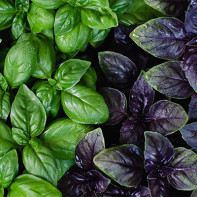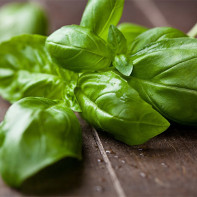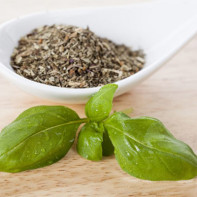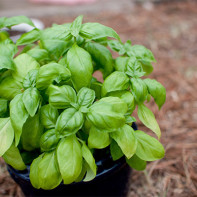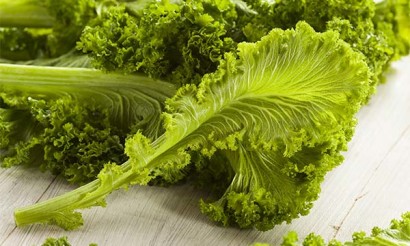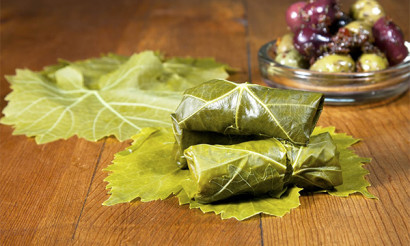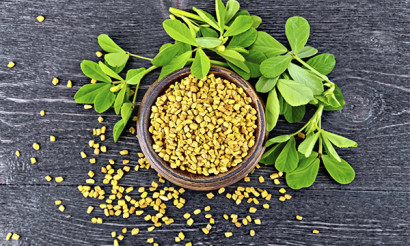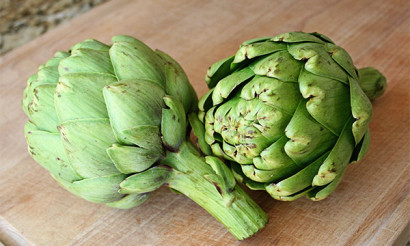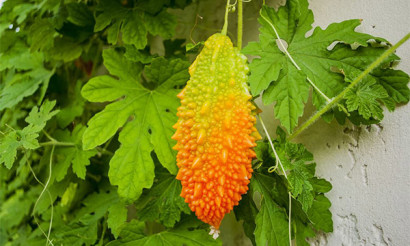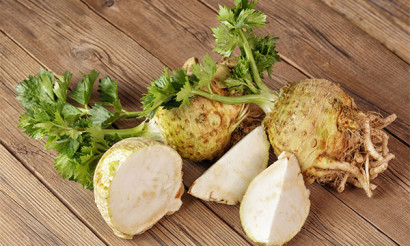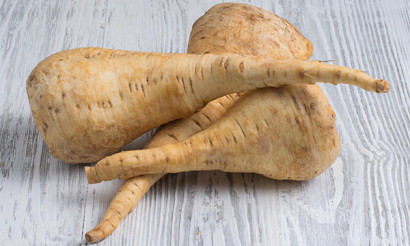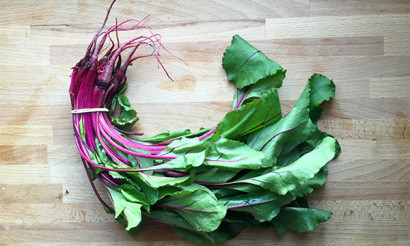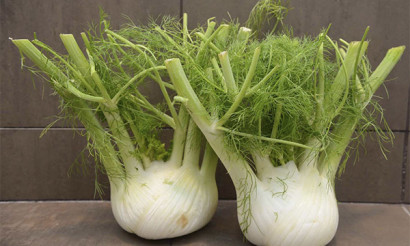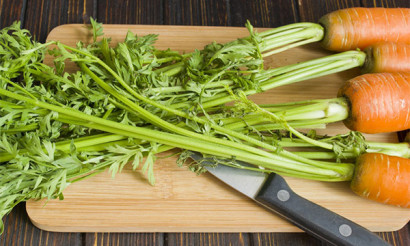Basil: useful properties and contraindications
Basil is a popular in many countries of the world spicy and aromatic culture, which is very useful for the human body.
- What is basil and what does it look like
- Types
- Which basil is healthier: green or purple
- Composition and calories
- Useful properties of basil
- General Benefits
- For Women
- Pregnancy
- Breastfeeding
- For Children
- Weight Loss
- The benefits of tea with basil
- What is the usefulness of dried basil?
- Basil in Medicine
- Diabetes mellitus
- For pancreatitis
- For gastritis
- For gout
- Recipes of folk medicine with basil
- Basil in cosmetology
- For Face
- For Hair
- Using Basil in Cooking
- Harms and Contraindications
- How to Store Basil
- Can be frozen
- How to Dry It
- Essential Oil of Basil: Properties and Usage
- Basil drink with lemon
- How to grow basil on a windowsill
- Interesting Facts about Basil
What is basil and how does it look like
Basil is a plant that has a branched top that grows in South Asia. It has a tetrahedral stem with an average height of 45 cm. Leaves have an elongated shape, green or purple color, with jagged edges. The flowers are pale pinkish or purple-white in small, tassel-shaped inflorescences.
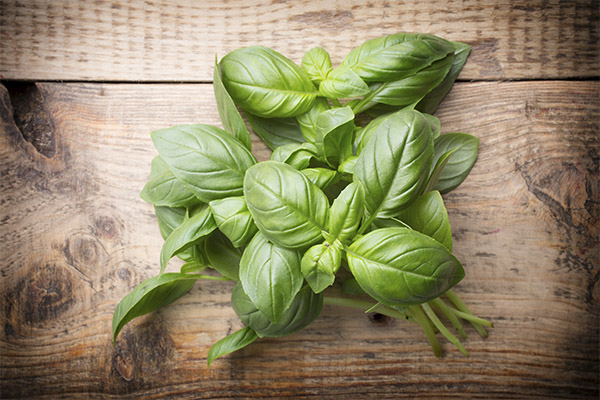
Basil leaves are great with meat, fish and vegetables. It can be used as a seasoning - it will give a nice flavor to the dish. Basil has a sweet taste with a bitterness. The spice can also be used for preserves for the winter.
Types of
There are quite a few different species of basil (about 70). They differ in the height of bushes, color and shape of leaves.
- Fragrant. The plant has many leaves and is about 60 cm high. The leaves and stems are characterized by a peppery aroma.
- Purple. The bush is up to half a meter tall. The color of the leaves is bright purple. Has a strongly pronounced aroma.
- Green. Plants have light green leaves, the average height of bushes is 40 cm. The fragrance is not as intense as that of the purple species.
- Cinnamon. The height of the plant is about half a meter. The leaves have a bright green color. Slightly minty aroma and a stinging aftertaste.
- Lemon. Shrub height - up to 35 cm, the leaves have a soft green color. Lemon flavor.
- Black. Leaves and stems have a dark or black-purple coloration. Shrubs average a height of about 40-60. Strong peppery, slightly pungent aroma.
Which basil is healthier: green or purple
If you compare the useful properties of purple and green basil, they are not particularly different. Both types help to effectively cleanse the body, can be used as medicines for various inflammations and problems with the gastrointestinal tract.
Composition and calories
In 100 grams of the product:
- Calories - 23 kcal;
- proteins - 3.2 g;
- fats - 0.6 g;
- carbohydrates - 1,1 gr;
- fiber - 1.6 g;
- water - 92,06 g.
Basil also contains vitamins A, B3, B4, B9, C, E, K. The spice is rich in potassium, calcium, magnesium, sodium and phosphorus, as well as iron, manganese, copper and zinc.
Useful properties of basil
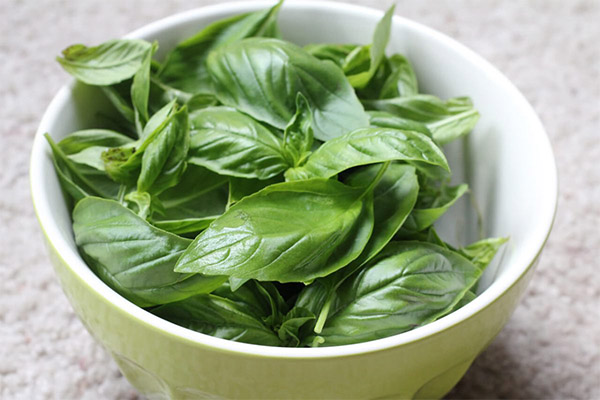
General Benefits
- Basil contains substances that help fight inflammation in the body and also have a soothing effect on the body. Basil helps to reduce swelling.
- The cure for arthritis. Joint diseases provoke swelling and pain. Sometimes it can even lead to heart, eye, lung and kidney damage. Basil contains large amounts of beta-caryophyllene. A study done at the Swiss Federal Institute of Technology showed that beta-caryophyllene can help with arthritis and may even cure it.
- The plant contains essential oils that help protect the body from bacteria and germs. Pathogenic bacteria cause various diseases: acute pharyngitis, cholera, tuberculosis and food poisoning. The substances in basil can prevent the spread of bacteria by inhibiting their growth and reproduction.
- Rich in antioxidants, which help regulate the amount of free radicals in the body. Free radicals can cause oxidative stress, which negatively affects proteins and genes. Antioxidants neutralize free radicals and repair damaged cells. Because of its high vitamin C content, basil can effectively fight oxidative stress in the body.
- The substances in basil help to fight the spread of malignant cells. They also help protect healthy cells during chemotherapy. Therefore, basil is useful as a preventative for cancer and also helps support the body during treatment.
- Helps treat diabetes. Basil lowers bad cholesterol and triglycerides. Bad cholesterol can trigger diabetes. Some studies have shown that basil can be used to treat and prevent this disease.
- Basil supports functions that help protect the liver. The plant helps significantly increase the production of detoxifying enzymes and reduces fat accumulation.
- Basil leaves can significantly reduce stress. They help in protecting the respiratory and cardiovascular system, help reduce blood sugar levels and prevent oxidative stress.
- One of the consequences of oxidative stress is premature aging. Basil helps to keep the body young and healthy. Free radicals are very detrimental to the skin, and exposure to UV rays can provoke dark spots. Basil contains antioxidants that can actively fight the above effects.
- Useful for Bones. As we age, bone tissue loses its density, bones become brittle, so the likelihood of fractures increases. Basil is an excellent source of vitamin K, which helps maintain bone density.
- It supports metabolism. The manganese found in basil is involved in the metabolic process. It supports enzymes that help in the metabolism of cholesterol, amino acids and carbohydrates. It is also essential for the metabolism of several glucose-related vitamins, including B1 and E. Also, the copper in the plant helps various enzymes that take part in metabolic processes function properly.
- Can prevent epilepsy, a chronic neurological disease characterized by recurrent unprovoked seizures. Seizures can affect health and even safety, especially if it occurs while driving or handling dangerous objects (such as a knife). One of the triggers for epileptic seizures is low manganese levels. Basil is high in manganese, and eating it regularly can prevent seizures.
For women
Basil is useful for women: it does not contain very many calories, it does not contain cholesterol, and it also helps to accelerate the breakdown of fats, so the spice is excellent as a dietary product. Decoctions based on the plant help reduce pain during menstruation, restore the cycle and increase lactation during breastfeeding. The essential oils contained in the plant are very actively used in the field of cosmetology, and also help to eliminate hair and nail brittleness.
Pregnancy
Useful properties of basil during pregnancy:
- The essential oils contained in the plant, as well as vitamin C and phytoncides help the immune system protect the body from infections. During pregnancy it is very important, because even a small cold can cause significant harm to the future mother and child.
- Basil helps with headaches, so instead of drugs, the intake of which is significantly limited, you can use this spice.
- Iron and folic acid support the development of the fetus, and also contribute to the prevention of anemia in a pregnant woman.
- Thanks to the potassium in the composition of basil, regular consumption of the spice helps to avoid the occurrence of cramps.
In addition, basil helps soothe, normalizes the heart muscle, has wound-healing properties and can be used for fungal infections.
In addition to its benefits, basil can also be detrimental to a pregnant woman. Overconsumption of the spice increases the risk of pregnancy termination. Reactions to essential oils vary among people, so different symptoms may occur:
- Itching and rash;
- irritation of the mucous membrane of the esophagus;
- upset stomach.
Women who have had these symptoms before pregnancy should exclude basil from their diet.
When breastfeeding.
Basil is one of the best representatives of the plant world that can fight anemia, so it is very useful for women in the postpartum period. It also improves digestion and helps the nervous system, has calming properties and supports the body in times of stress.
You can introduce basil into the diet after 2 months after childbirth. With diabetes or problems with the cardiovascular system, it is not recommended to use this spice.
For kids
The essential oils contained in basil help strengthen the immune system because they have antimicrobial properties. The leaves should be included in the diet of children in raw form, since in processed form they tend to have fewer beneficial properties. Eugenol and estragol, present in the essential oil, stimulate brain activity, especially in children.
Basil is allowed to be included in children's diets, but only from age 5.
For weight loss.
Dietitians claim that basil can safely be included in the dietary diet. Leaves in chopped form can be added to a salad or put on a sandwich.
It is not recommended to eat the product in pure form, and especially do not exceed the norm of consumption. It is allowed to eat up to 30 grams of herbs per day and only as a part of dishes (not in natural form).
Since it is a distant relative of mint, its sprigs can be brewed as tea. It is recommended to regularly consume teas and other drinks based on basil, because they have, though a small, but still useful in the period of weight loss. Daily rate of consumption of drinks based on basil seeds is up to 400 ml. For maximum effect, you should drink 100 ml after 30 minutes after a meal. The drink should not be consumed before a meal, because it may provoke an increase of appetite. The duration of regular use of basil should not exceed 20 days. After 30-35 days, you can include basil in your diet again.
The benefits of basil tea
Tea with basil is a useful relaxing drink based on the leaves of this plant. It has a lot of useful and even therapeutic properties.

- It contributes to building immunity. Tea with basil stimulates the protective functions of the body, so the drink helps to strengthen the immune system and supports the body to fight infections. It is recommended to consume basil tea because it will help prevent the development of infections and increase the body's resistance.
- It prevents the development of cancer. Basil tea can also help prevent free radical damage to cells. The antioxidants in the tea help prevent chromosomal defects, which in turn reduces the likelihood of cellular mutations that lead to tumor growth and development.
- Reduces inflammation. Basil tea contains many different essential oils that can inhibit enzymes that provoke inflammation in the body. Although this is the body's normal response to the effects of infection, chronic inflammation can cause many long-term disorders in the body, such as rheumatoid arthritis, heart disease and diabetes. Therefore, drinking basil tea is recommended to avoid the undesirable effects of inflammation.
- Detoxification. Studies done on rodents showed that those who received basil extract for just 5 days had a higher production of detoxifying enzymes as opposed to those whose bodies were not exposed to basil.
- Natural Aphrodisiac. For centuries, basil plant leaves and basil-based tea have been used as a natural aphrodisiac. People believed that the drink helped improve blood flow in the pelvic area. Today, science has confirmed these speculations and has also found that basil tea reduces stress and inflammation, which directly affects the health of the sexual system and testosterone production.
- It supports cardiovascular health. Basil tea promotes overall cardiovascular health and has anti-inflammatory effects that help prevent platelet aggregation and the likelihood of blood clots, reducing the risk of strokes and heart attacks. In addition, the tea helps thin the blood and reduces cholesterol deposits on the walls of blood vessels, which can adversely affect blood flow.
- It helps fight depression. Regular consumption of basil tea is known to help improve mood. This is due to its ability to stimulate the synthesis of mood-enhancing neurotransmitters such as dopamine and serotonin. These neurotransmitters also have a positive effect on brain health in general.
How dried basil is beneficial
Dried basil has anti-inflammatory properties and helps prevent migraines and bronchial asthma attacks. Oncologists recommend regular consumption of this spice because basil is a preventive agent against tumors. It helps to cleanse the body of carcinogens that provoke cancer. According to some experts, dried basil can protect against radiation.
Basil in Medicine
Basil is also widely used in the medical field. It helps strengthen the immune system and is especially effective as a remedy for infections. Basil-based preparations help with respiratory problems, the circulatory system, and kidney inflammation.
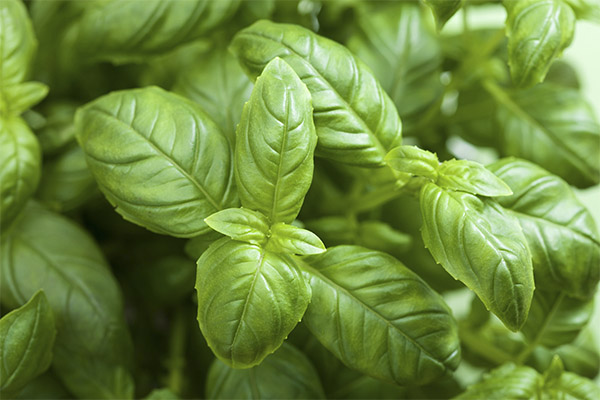
For Diabetes Mellitus.
Basil has a fairly low glycemic index (5 units). It contains vitamins C, PP, B1, as well as rutin and carotene. The spice helps to strengthen the walls of blood vessels and improve the health of the nervous system. In addition, basil supports the production of insulin. It is recommended to chew basil leaves in the morning on an empty stomach, and it can also be used in salads, sauces, soups, with fish and meat. You should not use basil for diabetes in pregnant and lactating women.
Pancreatitis
Basil can be used with pancreatitis, but only in remission. The plant supports the work of the gastrointestinal organs, has antimicrobial properties, helps to activate the production of gastric enzymes. Basil contains a large amount of essential oils, so the recommended daily rate is up to 2 teaspoons of crushed leaves.
With gastritis
Basil with gastritis is not a prohibited product, but rather, it is even recommended in the period of remission. Moreover, it is often used as a remedy to help relieve the symptoms of this ailment. For example, basil-based drinks help suppress heartburn.
For Gout
Basil is also useful for gout. The oils in the plant help reduce the levels of uric acid in the blood, this helps a person feel better. These oils also help suppress the pain of an acute attack of gout.
Folk medicine recipes with basil
Cough Infusion.
- Basil flowers or leaves (20 g) pour boiling water (1 cup) and put on a water bath (for 15 minutes).
- Remove from the bath and allow to cool (45-50 minutes).
- Strain the infusion.
- Take every day for 70 ml. half an hour before a meal.
Decoction from a runny nose
- The seeds or above ground part of basil (15 g), pour boiling water (1 cup) and put on a water bath (30 minutes).
- Cool (10 minutes) and strain with gauze.
- Take 3 times a day for 70 ml before a meal.
Bath with basil
Brew the herb (4 tbsp.) with boiling water (1 liter), insist, strain and pour into the bath. It is taken at a temperature up to +38ºC for about 20 minutes. It helps to relax and get rid of skin diseases.
Basil in cosmetology
Basil has a wide application in cosmetology. There are many different masks for skin and hair based on basil, which help to rejuvenate and revitalize the appearance.
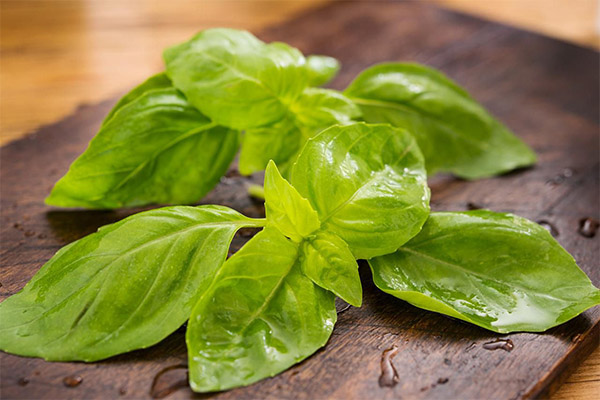
For the face
Face Lifting Mask
- Grind basil leaves into a pulp.
- Apply to face, neck and décolleté area.
- Place gauze on the chosen area.
- Time of action - 30 minutes.
- Wash with cool water.
Mask from black spots
- Soak the leaves in water and place them on the area with black dots.
- The time of action is 5 minutes.
- Wash out with cool water.
Face lotion
- Grind the leaves of basil to a pulp.
- Pour the resulting mass of boiling water (1 cup) and leave for 30 minutes.
- Filter it off and rub it over your skin regularly.
For hair
Decoction against hair loss
- Chopped fresh leaves (2 spoons) steeped in boiling water (up to half a liter) and let stand for 30 minutes.
- Strain the infusion.
- Wash your hair with it after using shampoo.
Mask for dry hair
- Dry basil (1 tbsp.) and rosemary (1 tbsp.) pour boiling water (1 liter), add coconut oil (1 tbsp.).
- Add lemon essential oil (2 drops) and allow to stand for 30 minutes.
- Apply to the scalp (rubbing into the roots) and wrap hair with a towel.
- Time of action - 30 minutes.
- Wash off with water.
Using basil in cooking
The properties that basil has are highly valued in the field of cooking, because it gives the dishes useful and spicy spicy taste with a slight hint of bitterness. Basil can be used both in its natural and dried form. If stored properly, the plant can last a very long time without losing its useful properties. As a rule, the parts of the plant that are on the surface of the ground are used in cooking.
Fresh basil is considered especially valuable. Fresh young leaves and shoots in chopped form can be seen in various salads, sandwich variations, marinades, pickles, as well as in the composition of vegetable, meat and fish dishes. Basil is also very common in ketchups, gravies and salad dressings. Basil is indispensable during canning and smoking. The sprigs of the plant are used to add flavor to various dishes.
What can be used as a substitute?
For basil is quite difficult to find a replacement. But in a completely hopeless situation, it can be partially replaced with oregano, thyme and marjoram.
Harms and contraindications
People who have low blood sugar and those who have low blood pressure are not recommended to use basil, because this spice can aggravate the condition.
If you consume basil for a very long and intense period of time, the possibility of developing liver cancer increases due to the presence of estragol in the plant. For the same reason, large amounts of basil can be unsafe for pregnant, breastfeeding women or young children.
How to store basil
There are several ways to store basil:
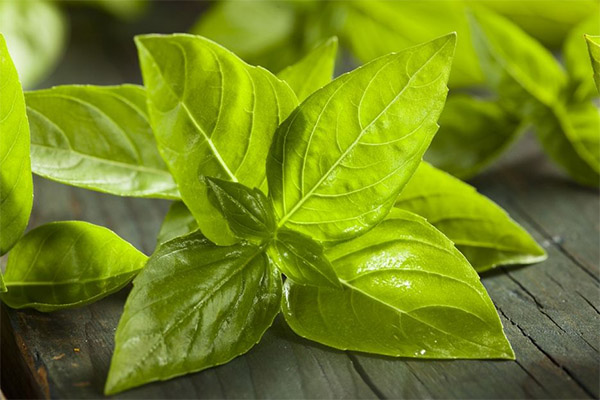
- Basil wrapped in plastic wrap beforehand can be placed in the refrigerator. This will help it stay fresh longer.
- Trim the stems and place the basil in water (can be put in the refrigerator). This will also help extend shelf life (up to 7-8 days).
Can I Freeze?
Basil can be frozen. It should be washed and dried. After that, wrap it in a cellophane bag and place it in the freezer. This will allow you to store the spice for quite a long time.
How to Dry
Basil can also be dried. First, it should be washed and wait until it dries. After that, you need to hang the plants with the leaves down in a ventilated dry and dark place.
Essential oil of basil: properties and uses
Basil oil is obtained by steam distilling the leaves of the plant. The resulting product has many useful and therapeutic properties.
- It helps to increase the body's tone and stimulates the defenses to work more actively.
- It also helps regulate blood pressure, which prevents dizziness, migraines and headaches.
- Basil oil has strong properties that regulate digestive processes and help relieve discomfort in case of overeating.
- It helps relieve the symptoms of respiratory diseases and colds.
- Basil oil also has an activating effect in case of menstrual disorders.
Applications
In cosmetology, basil oil is used as a skin and hair care product. The oil helps to eliminate almost all problems related to the health and appearance of the skin. The only thing it cannot fight is warts.
The oil helps to stimulate hair growth, improves its structure and gives it a healthy shine. Essential oil is also used in dentistry as a therapeutic agent for oral cavity lesions and in the case of gum ulcers. The oil can act as an aid against insects and helps to eliminate the effects of insect bites. In cooking, basil oil is used in canning and is also excellent for meat dishes.
Basil drink with lemon
Ingredients:
- water - 1.5 liters;
- basil (purple) - 50 gr;
- lemon - 1 pc;
- sugar - 100 gr.
- Place washed basil in a jug-type container and pour boiling water into it. Leave it for 20 minutes until water turns dark purple.
- Pour the squeezed and strained lemon juice into a container.
- After that, add sugar and stir well.
You can add grated ginger root for an even healthier drink.
How to grow basil on a windowsill
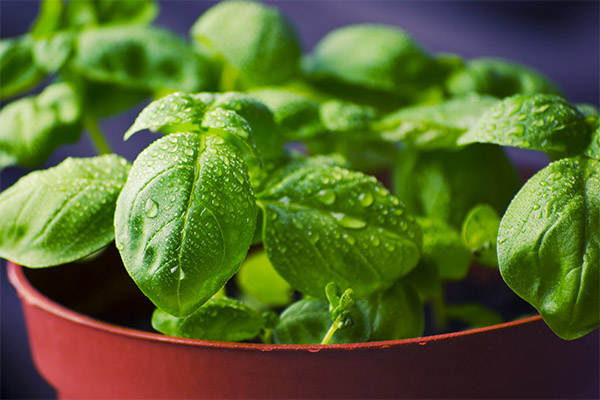
- The first thing to do is to prepare the soil for planting. It is recommended to use soil and peat in a ratio of 1:1 (or take universal ready-made soil).
- Basil can be sown with or without picking. If you decide not to pick, you should first grow seedlings, and then transplant them into boxes.
- Seeds should be sown in prepared containers. The interval between the rows - 5 cm, the depth of planting - 0,5 cm. After planting, cover with earth, moisten and cover with a film.
- The seedlings should be placed in a warm room. In 9-12 days the first shoots will appear. After that, you need to remove the film and move the boxes to a place with access to the sun. Water the basil with warm water, while it is important not to overwater.
- The first feeding is carried out on the 10th day after the emergence of shoots. After 3 weeks, the plants can be potted.
- A week later the second feeding should be done. Be very careful not to do this, so you do not damage the plants.
- After 3 weeks, when the shoots have already grown to 10-13 cm, you can cut off the leaves. It is advisable to feed the plants after harvesting.
- With the appearance of 5-6 leaves, those leaves that are on top should be plucked off.
- Watering should be done in the morning, once every 4 days.
- It is recommended to place the plants in the sunniest place or arrange for it to be backlit.
Interesting facts about basil
- Basil is versatile. It can be used both fresh and dry. It can be used in both unsweetened and sweet dishes.
- Basil has a wide range of uses in folk medicine. Basil tea is very useful and is used to treat a wide range of ailments, from constipation and stomach cramps to anxiety and depression.
- Basil contains chemicals that insects do not like (while not harmful to humans). For example, mosquitoes do not like basil.
- Basil is revered in many different religions. In addition to being considered sacred by Hindus, in some countries (e.g., Bulgaria, Slovenia, Macedonia, and Serbia) it is used in the preparation of holy water.
- Basil is related to mint.
«Important: All information on this site is provided for informational purposes only All information on this site is provided for informational purposes only. Consult a health care professional before following any recommendations. health care professionals. Neither the editors nor the authors shall be liable for any possible harm caused by materials."


